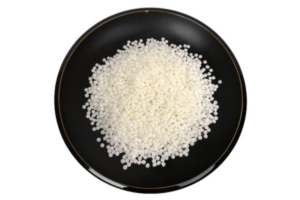Carboxymethyl Cellulose Sodium (CMC) eye drops are a common treatment for dry eyes, a condition medically known as keratoconjunctivitis sicca. While CMC eye drops are generally considered safe and effective, understanding their potential side effects, especially with prolonged use, is crucial from a professional healthcare perspective.
Overview of Carboxymethyl Cellulose Sodium Eye Drops
- Function: CMC is a lubricant that mimics natural tears, providing relief from the discomfort associated with dry eyes. It helps to maintain moisture on the ocular surface, thus protecting the eyes from injury and infection.
- Composition: These eye drops contain CMC as an active ingredient, which is a viscous polysaccharide that forms a protective layer over the cornea, alleviating the symptoms of dryness.
Potential Side Effects
While the side effects of CMC eye drops are generally minimal, some individuals may experience adverse reactions, particularly with long-term use.
- Temporary Blurred Vision: One of the most common immediate side effects is a temporary blurring of vision right after application. This is typically short-lived and clears as the solution disperses across the eye surface.
- Eye Discomfort or Irritation: Some users may experience mild eye irritation or discomfort, including a burning sensation, redness, or itching. This is usually transient but can persist in some cases.
- Allergic Reactions: Rarely, individuals may develop an allergic reaction to CMC or other components in the eye drops. Symptoms of an allergic reaction include severe itching, redness, swelling, and pain.
- Tear Film Instability: Prolonged use of eye drops can sometimes lead to an imbalance in the tear film composition, potentially exacerbating dry eye symptoms in the long run.
- Dependency: There’s a potential for the eyes to become reliant on the artificial lubrication, leading to reduced natural tear production over time.
Considerations for Prolonged Use
- Monitoring: Regular monitoring by an eye care professional is recommended, especially for individuals using CMC eye drops over an extended period. This ensures any adverse effects are detected and managed promptly.
- Usage Guidelines: It’s important to follow the recommended usage guidelines and not exceed the prescribed dose. Overuse can lead to an accumulation of the product, potentially causing irritation or other adverse effects.
- Quality of Eye Drops: The formulation and preservatives in eye drops can affect tolerability. Preservative-free formulas are often recommended for long-term use to reduce the risk of irritation or allergic reactions.
- Alternative Treatments: In cases where side effects are persistent or bothersome, alternative treatments or different formulations may be considered. This can include other types of lubricating drops, gels, or lifestyle modifications.
- Consultation with Healthcare Providers: Individuals experiencing ongoing discomfort or adverse reactions should consult their healthcare provider. This is particularly important for those with pre-existing eye conditions or those using other ocular medications.
Conclusion
In summary, Carboxymethyl Cellulose Sodium eye drops are a widely used and generally safe treatment for dry eyes. However, like any medication, they can have side effects, especially with prolonged use. These side effects are usually mild but can include temporary blurred vision, eye discomfort, and, rarely, allergic reactions. Regular consultation with an eye care professional and adherence to usage guidelines are key to minimizing potential side effects and ensuring effective and safe treatment of dry eye symptoms.





